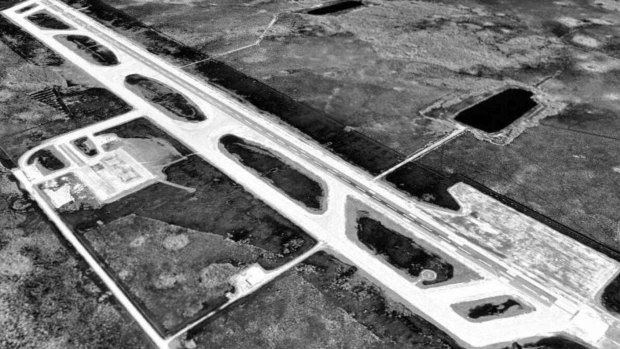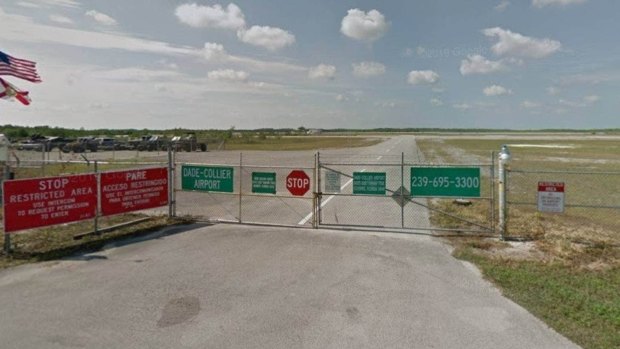This was published 2 years ago
Everglades Jetport: How the 'airport of tomorrow' now lies abandoned in the middle of a US swamp
By Alan Granville

An aerial view of the runway in 1995.Credit: USGC
In an alternate reality, the name Everglades Jetport would be synonymous with glamour and luxury.
It would be a name on the lips of the rich and the famous as they arrive off their supersonic jets in the US from distant destinations around the globe, before being whisked off to the nearby bright lights of Miami and beyond.
Instead, the name is now long forgotten. All that remains is one lone, large runway in the middle of a swamp, a sad relic of what was going to be the world's biggest airport.

The runway has been used as a training facility for pilots.Credit: Google Earth
It could have been so different. It was the end of the 1960s and the "Golden Age of Flying" of gourmet meals, cigars and endless champagne and was still in flow. Concorde was being developed, as was a US rival –the Boeing 2707, and the age of supersonic jets was about to transform the way the world travelled.
The American alligator thrives in Florida's Everglades and provides an incredible sightseeing experience.
One of the niggling issues which was still stumping plane manufacturers was the problem of the "sonic boom" that typically occurs when aircraft breach the sound barrier. The strict regulations surrounding supersonic travel meant it was difficult to find appropriate locations that could be built on to accommodate these planes.

A plane takes off from Everglades Jetport in July 1972.Credit: Alamy
So where better to get around this than build in a swamp in South Florida, far enough away from built-up cities but close enough to the ocean?
The plan was big, in fact, very big. This would be the largest airport in the world. At more than 100 square kilometres, it would have six runways and be five times bigger than JFK Airport in New York, US.
There would be high-speed monorail links to Miami and the East Coast, new highways would be built, hotels planned – the world would come to this swamp from Europe, South America and Asia.
Construction got underway in 1968 and a giant 3.2km runway was laid quickly. But soon after that, the wheels started to come off the epic plan.
First environmentalists started to protest the effect the airport was having on the Big Cypress Swamp and the Everglades National Park. It led to the first-ever ecological impact report in the state of Florida. Even before its publication, one US senator stated: "Either we stop the jetport at the present site, or we publicly admit that we are going to destroy the park."
The report led to a halt in construction in 1970. A second blow for planners took place soon after when Boeing decided to ditch the 2707, and the appeal of mass supersonic jet travel dimmed.
There were some ideas to move it, but in the end, it was decided to just abandon the idea for a supersonic jetport.
But it wasn't the end for the airport, which also went by the name Big Cypress Jetport. It is still in use, although dramatically different to those original plans.
Named Dade-Collier Training and Transition Airport it is run by the Miami-Dade Aviation Department. Besides the runway, there is only a trailer with an office in it, and four staff who look after maintenance and security. It has been used in the past as a training facility for pilots, and also for high-speed car events.
Lonny Craven, who manages the airfield, told CNN that despite appearances, the airport is not abandoned, but that landings are now restricted to only emergencies.
"Right now, due to restrictions, we only have it open from eight o'clock in the morning till 5.30 at night," said Craven.
He said there have been plenty of rumours of what to do with what was "supposed to be the airport for tomorrow".
"If the Space Shuttle had to make an emergency landing, it could go there."
See also: Ten of the world's greatest abandoned, unfinished and unused behemoths
See also: Inside the deserted, 'zombie' airports of the travel apocalypse
Sign up for the Traveller Deals newsletter
Get exclusive travel deals delivered straight to your inbox. Sign up now.